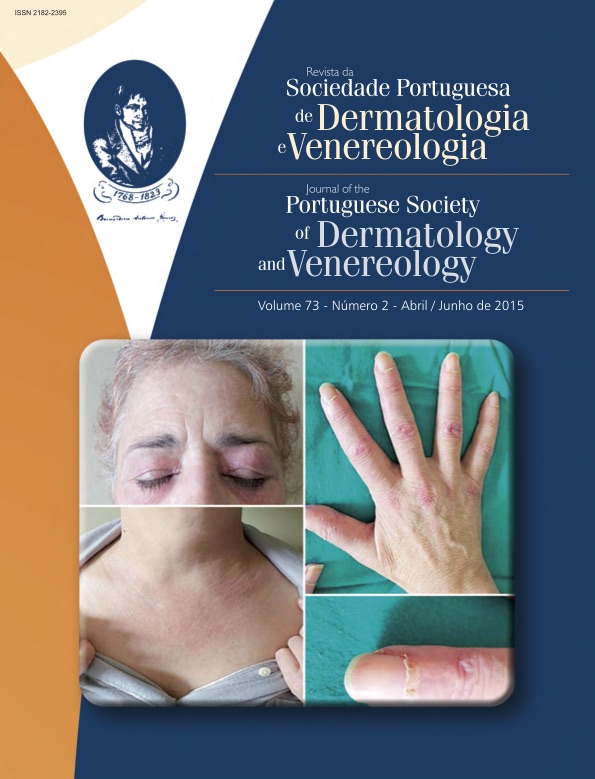RECURRENCE OF MELANOMA FOLLOWING A NEGATIVE SENTINEL LYMPH NODE BIOPSY - A RETROSPECTIVE STUDY
Abstract
Introduction: The sentinel lymph node biopsy is an important tool for staging patients with melanoma, allowing identification of occult regional lymph node involvement and avoidance of unnecessary lymphadenectomies.
Objective: To analyze the patterns of recurrence of melanoma in patients with a negative sentinel lymph node biopsy result and identify the clinical and pathological characteristics potentially predictive of recurrence after a negative sentinel lymph node biopsy.
Materials and methods: A retrospective study was conducted in patients with cutaneous melanoma who underwent sentinel lymph node biopsy in the Department of Dermatology, Santarém Hospital, between 2005 and 2011.
Results: 96 sentinel lymph node biopsy staged patients were evaluated. Of these, 29 patients had a positive sentinel lymph node biopsy result, 66 had a negative sentinel lymph node biopsy result and one patient had an inconclusive result. Among the 66 patients with a negative sentinel lymph node biopsy result, 11 (16.7 % of the negative results) had a recurrence of melanoma at a median of 21.7 months of follow-up (range, 8-51 months). Compared to the patients without recurrence, these patients had an older age at diagnosis (mean 71.8 vs 62.9 years; p=0.021), were predominantly of male sex (54.5% vs 29.1%; p=0,159), and had deeper primary lesions (median thickness 2.92 vs 1.80 mm; p=0.087) that were more likely to be ulcerated (63.6% vs 38.1%; p=0,177) and to have vascular/perineural invasion (40% vs 13%; p=0,207). Nodular melanoma was the most prevalent clinical variant in this group (54.5%), while in the group with recurrence prevailed the superficial spreading type (50.9%).
Conclusions: Overall, recurrence of melanoma after a negative sentinel lymph node biopsy result (16.7%) was similar to that in previously reported studies. We identified as possible predictors of recurrence, despite a negative sentinel lymph node biopsy result: older age at diagnosis, male sex, higher Breslow thickness, presence of ulceration, presence of vascular/perineural invasion, and nodular variant.
Downloads
All articles in this journal are Open Access under the Creative Commons Attribution-NonCommercial 4.0 International License (CC BY-NC 4.0).








